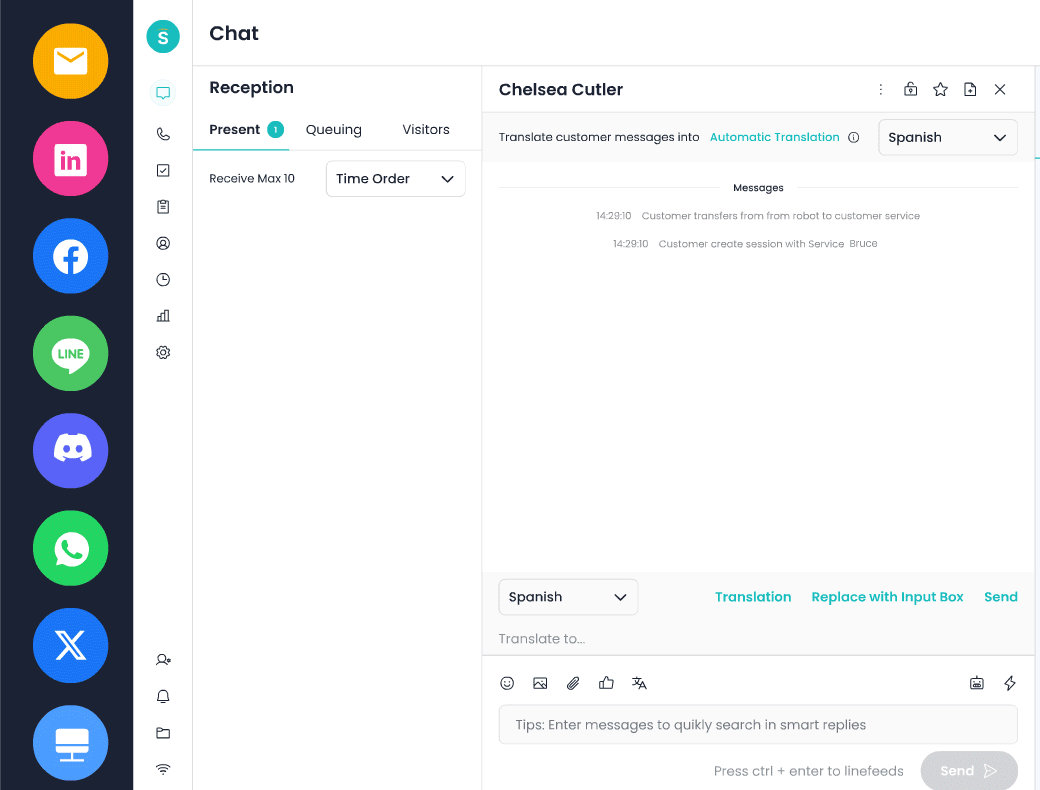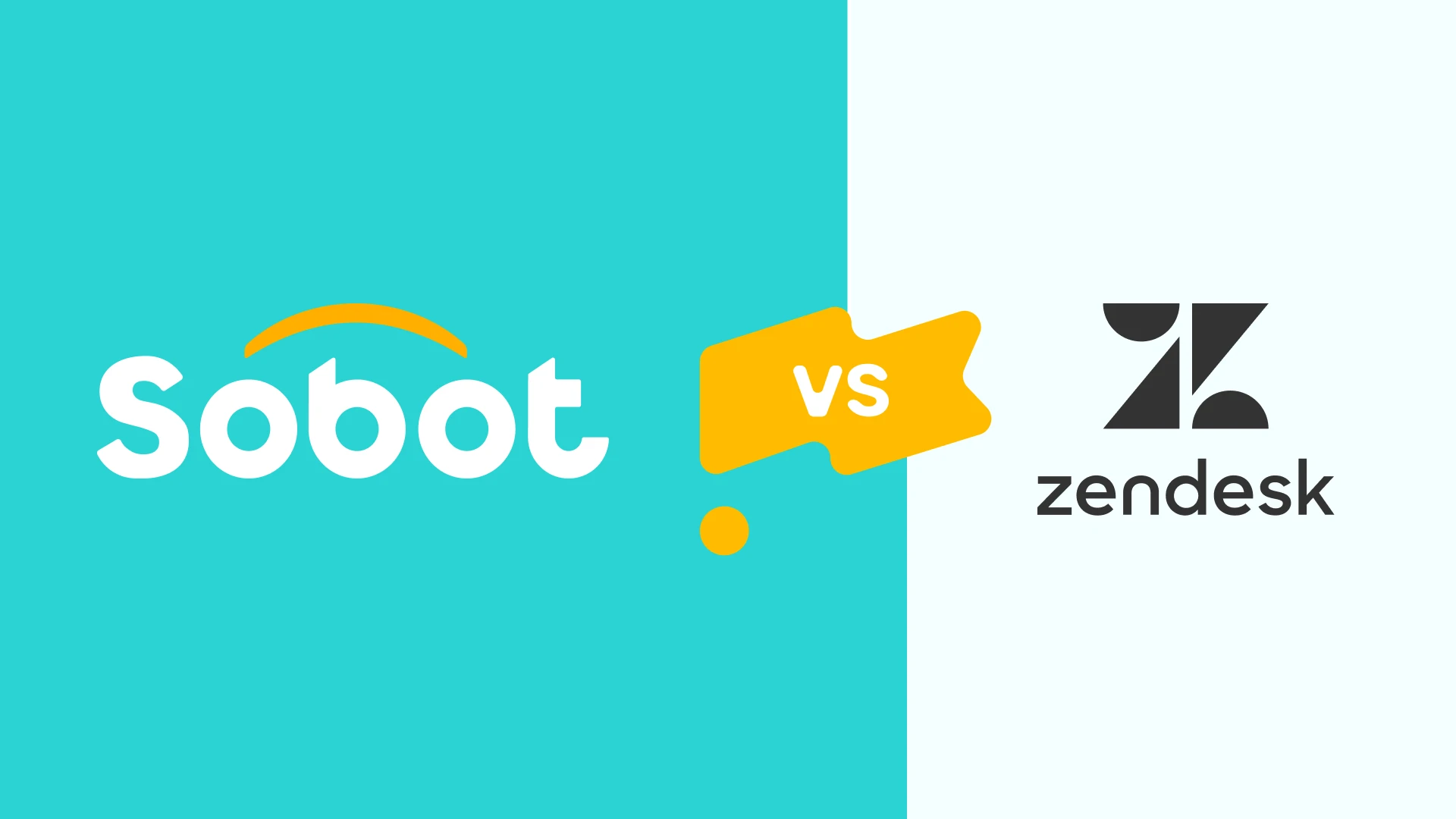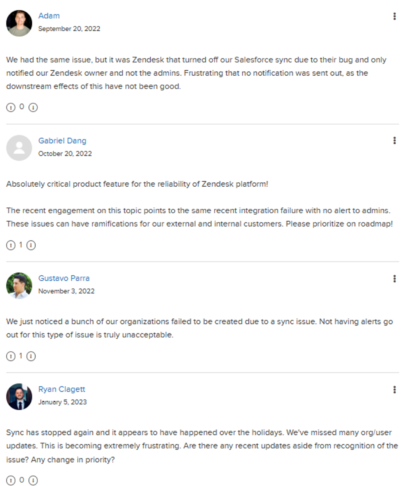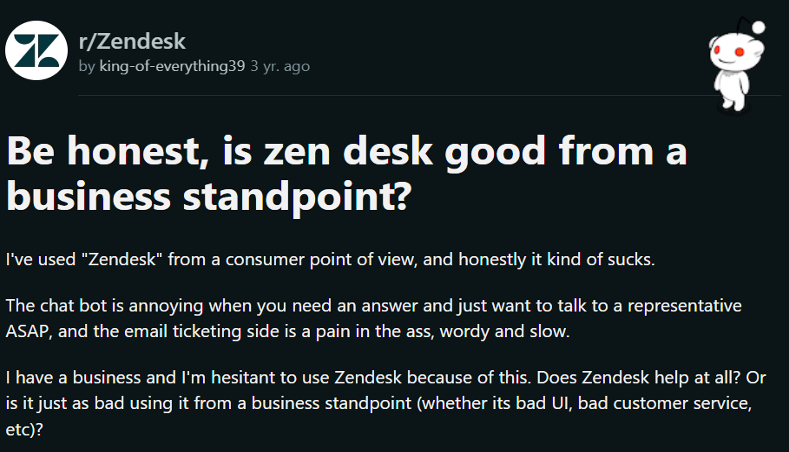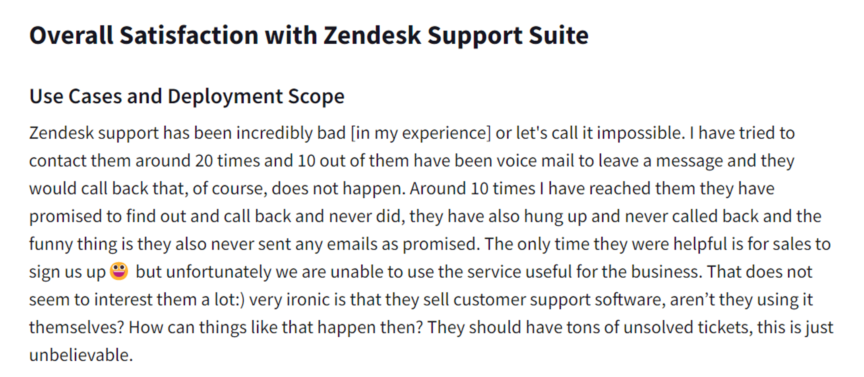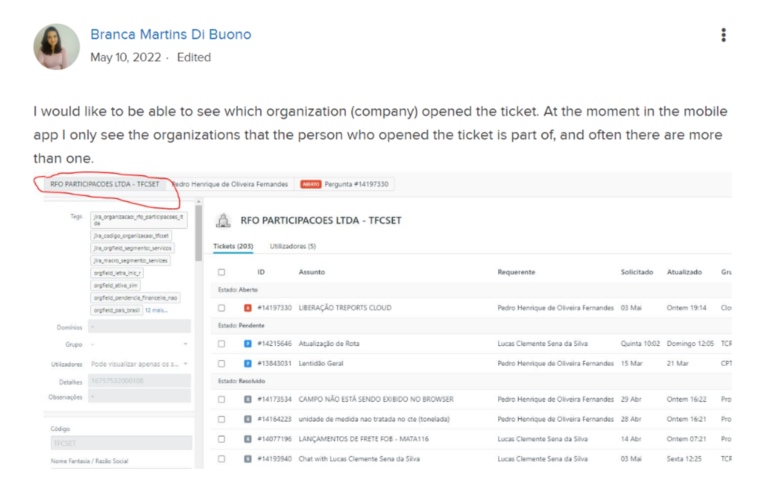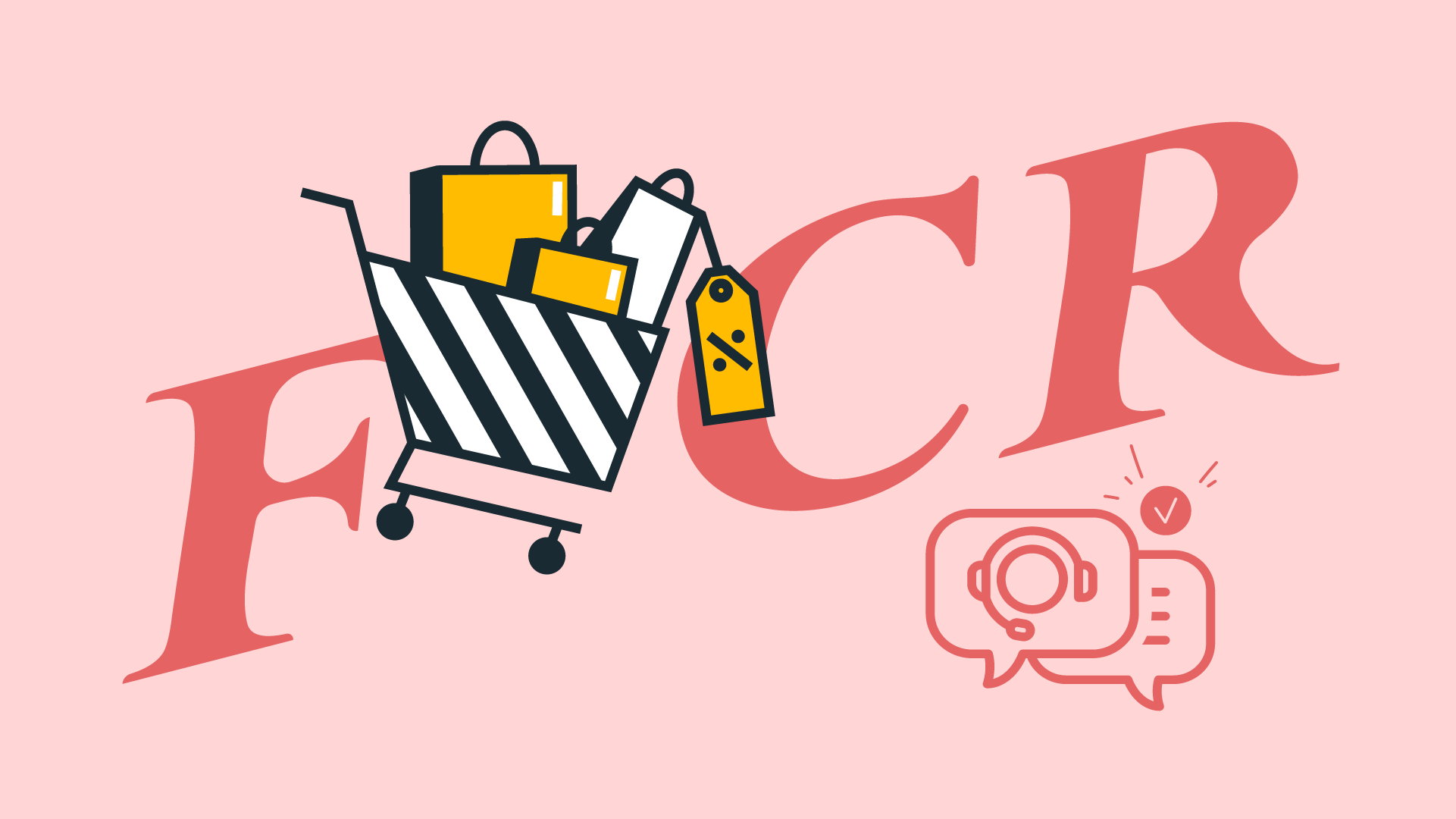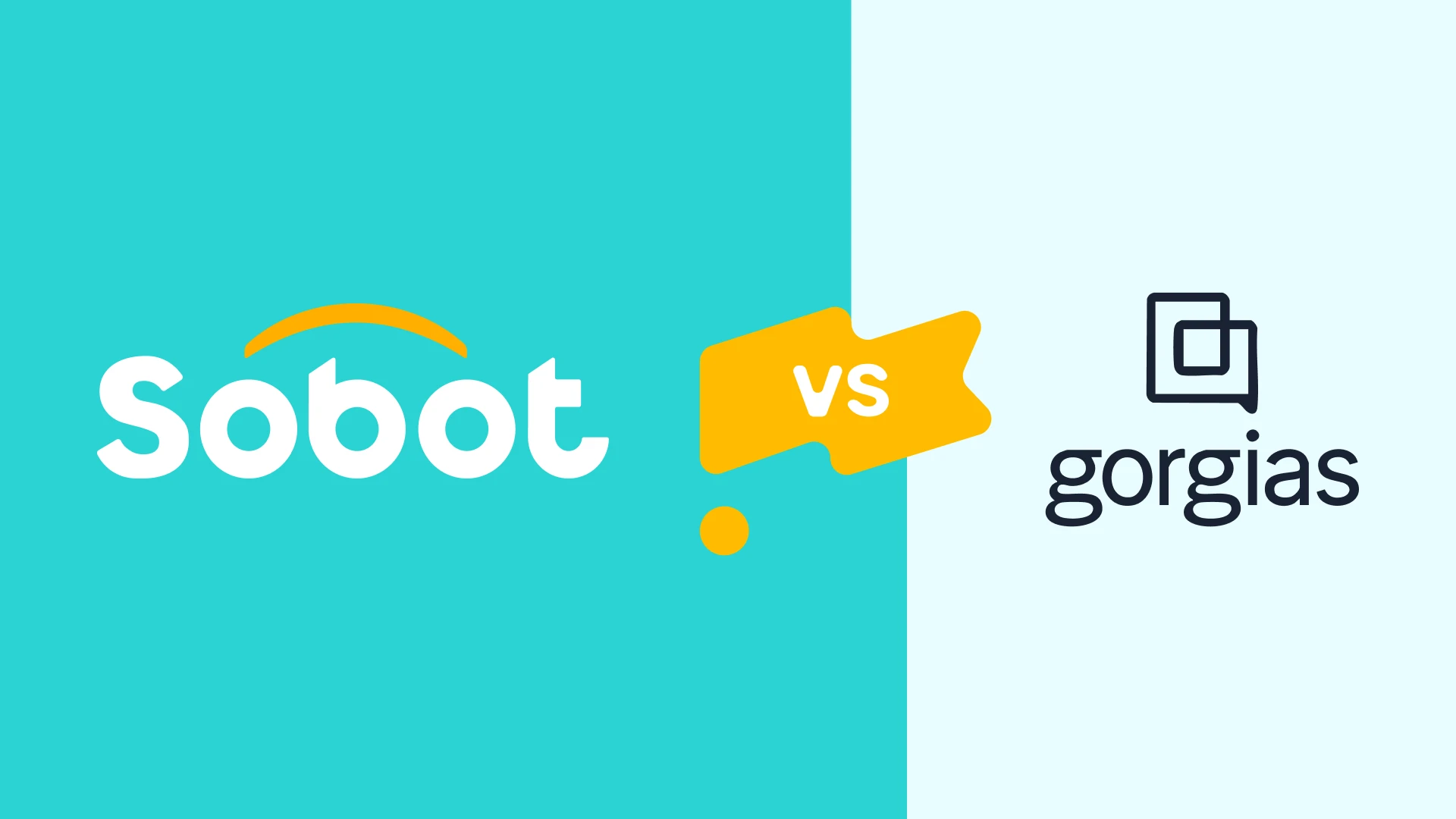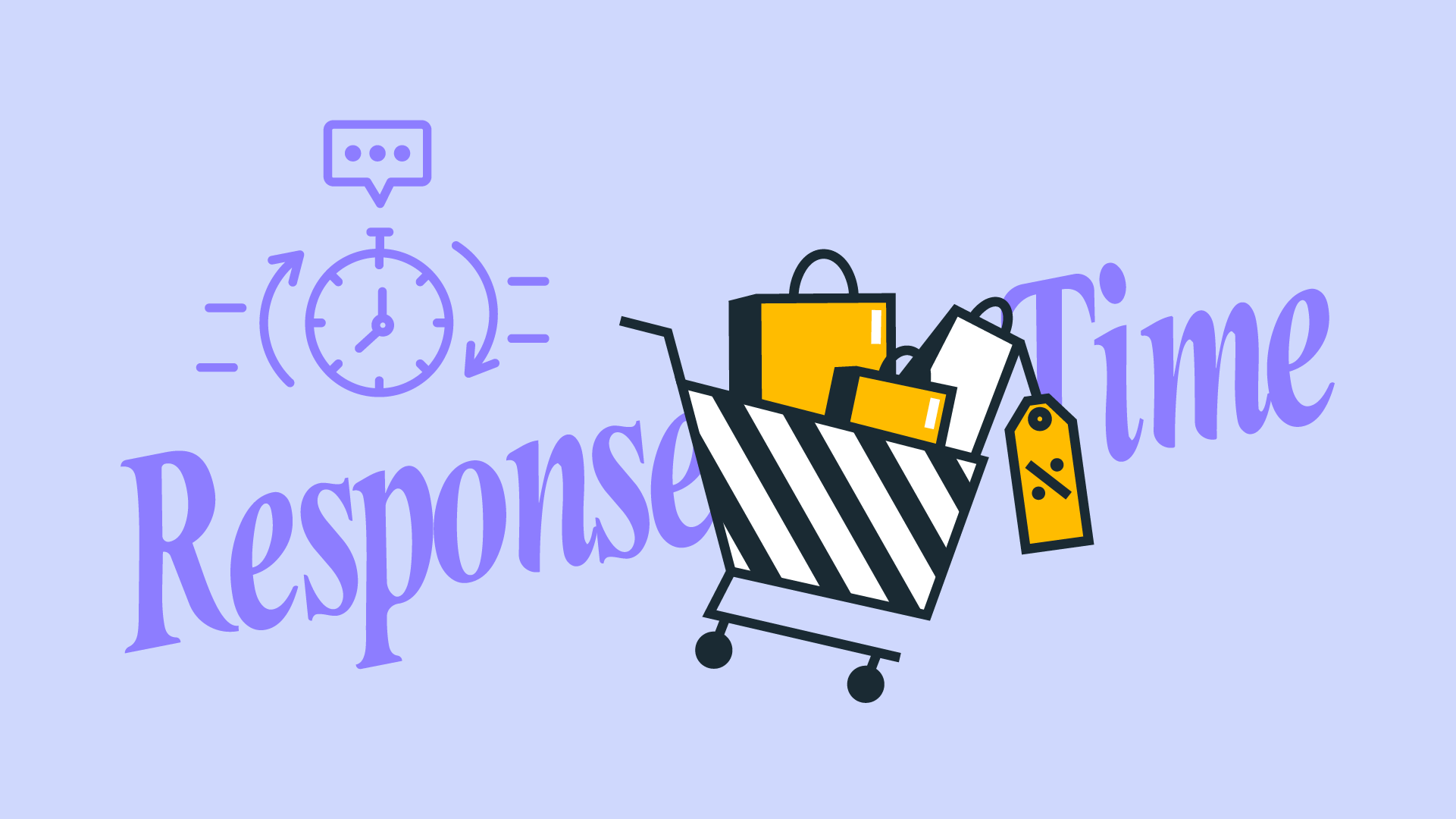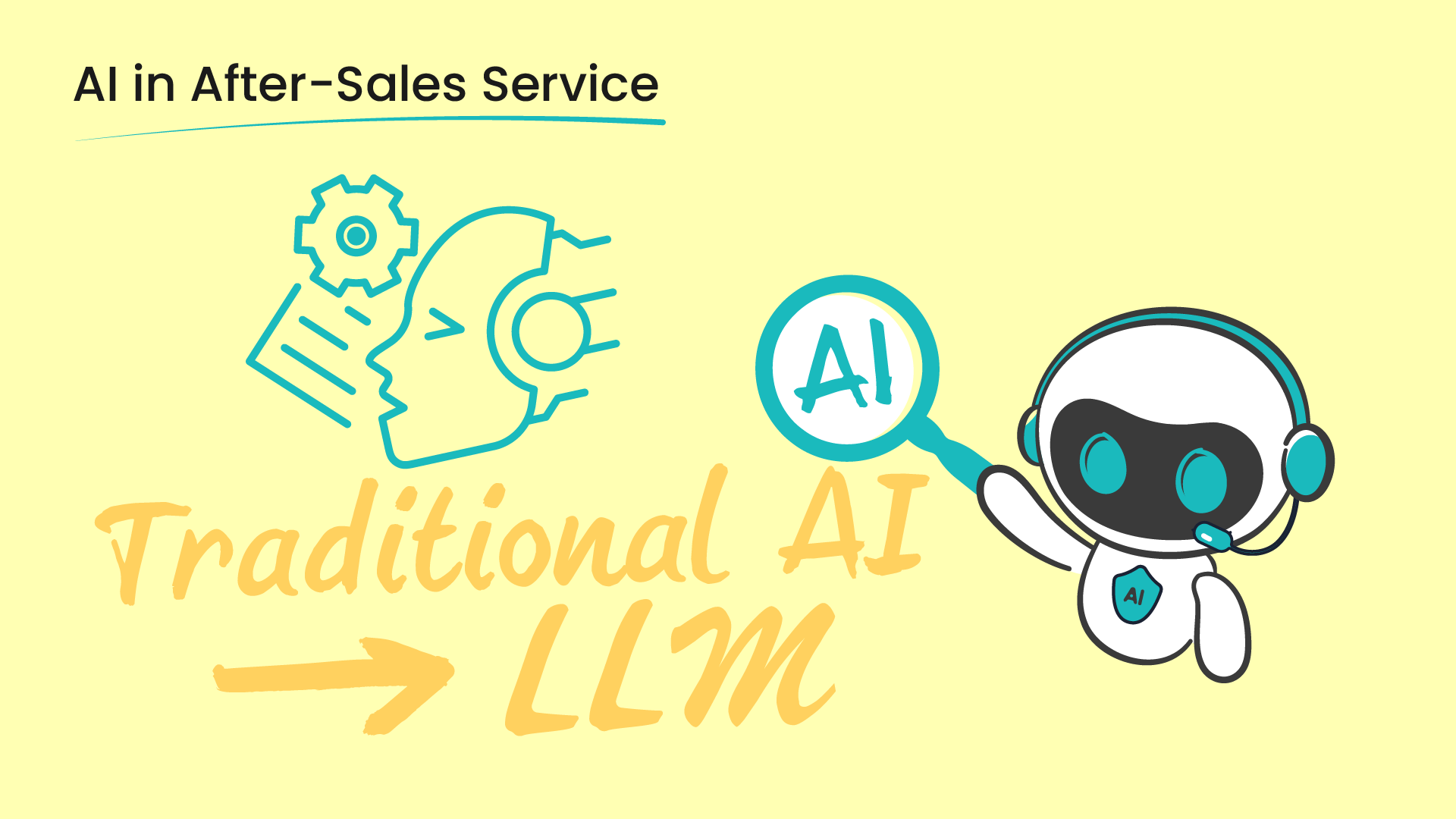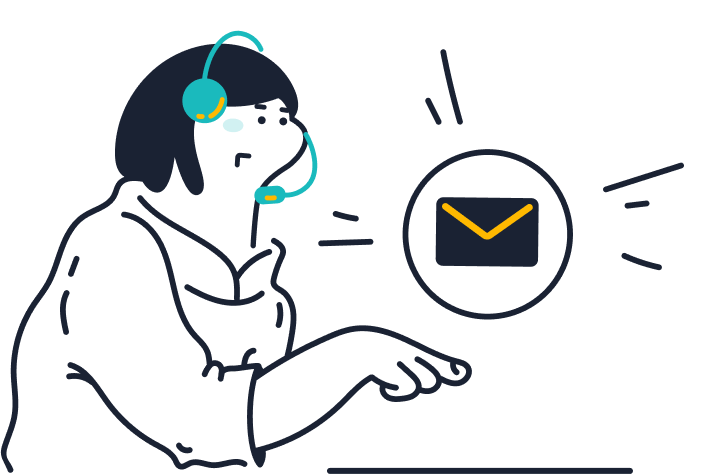Zendesk has established itself as a prominent participant in the helpdesk software industry, with a client base of more than 160,000 paying customers in 160 countries, primarily operating in B2B models.
The Zendesk solution assists both large and medium-sized industries modernize their contact centers, expand self-service capabilities, and foster emotional connections with their customers. Airlines and institutions are increasingly utilizing Zendesk helpdesk to boost customer loyalty and minimize expenses by providing proactive, personalized, and efficient customer service.
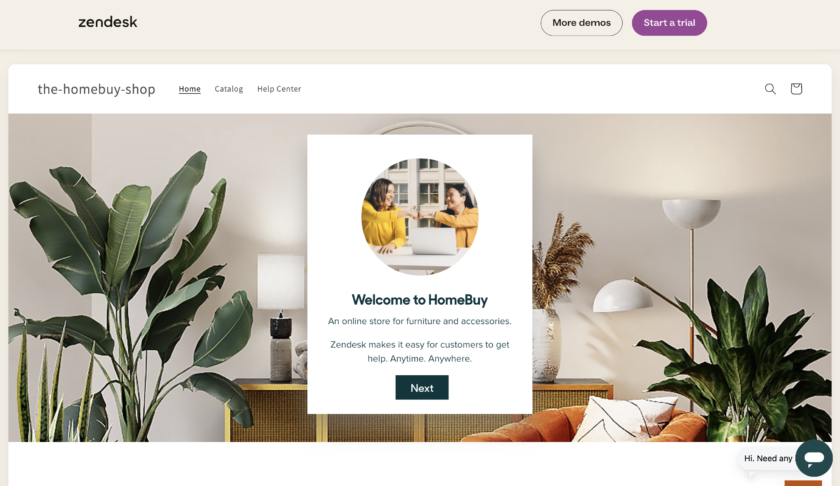
Customers are expressing genuine concerns, even though the company has a great brand and reputation. Many customers have questioned Zendesk’s dedication to building good customer relationships since the company was acquired by private investors for $10.2 billion.
There are criticisms that center on the company’s resource allocation and the diminishing quality of service, which suggests that the company’s marketing efforts may not be as effective as it indicates it is when it comes to the customer experience.
But is Zendesk really the best choice for your business? If not, are there other platforms like Zendesk that might give you a higher rate of return on your investment?
Zendesk Most Popular Features
- Ticketing System
- Multi-channel support
- Self-service knowledge base
- Chat and phone support
- Analytics
- Automation and customized workflows
- Collaboration tools and CRM
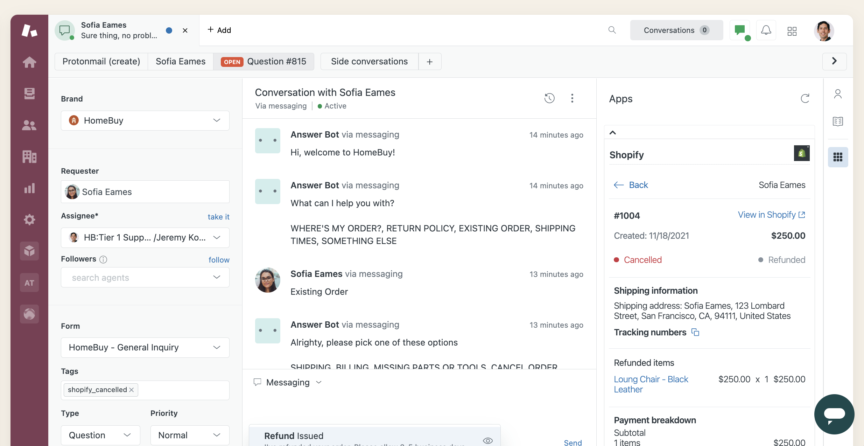
1. Ticketing System
Zendesk’s ticketing system is a reliable solution for administering consumer inquiries submitted through a variety of channels, including email, phone, chat, and social media. By centralizing communication, it makes sure that concerns are tracked, prioritized, and resolved effectively. Additionally, it provides customizable procedures and automation to make ticket administration more efficient.
The ticketing system is one of the best aspects, and incredibly user-friendly. It makes it easier to monitor inquiries and effectively respond to consumers’ demands. Strong reporting capabilities also make it possible to create comprehensive, editable reports, which greatly enhances the capacity to make decisions. Another significant benefit of the platform has been its general ease of customization, which allows one to precisely fit it into the processes.
Pros of the Zendesk Ticketing System
- Integrations: Integrates with various third-party apps.
- Customization: Enables users to customize applications without extensive coding.
- Security: Prioritize data security as per industry rules and regulations.
- Scalability: Ability to scale to meet growing demands in customer services.
Cons of the Zendesk Ticketing System
- Cost: Expensive at the advanced tier of services
- Steep Learning Curve: Can be difficult to learn at certain levels.
- Limitation in Customization: Low-tier customers face limited customization options
- Performance Issues: Performance can be impacted at peak hours.
2. Multi-Channel Support
Another appealing feature that Zendesk provides is managing customer assistance across numerous communication channels. Zendesk brings together all client communications from e-mail, telephone, live chat, and digital channels into a single dashboard. Again, this eliminates the need for agents to switch between systems, lowering the risk of mistakes or missing queries.
Zendesk Talk, Zendesk’s phone support option, is incorporated directly into the platform. Businesses utilizing Zendesk do not need to depend on third-party phone solutions. Of course, all calls may be documented, recorded, and turned into tickets for future reference.
Pros of Zendesk Multi-Channel Support
- Centralized Customer Interactions: All customer communications from various channels are integrated into a single platform.
- Omnichannel Competencies: Customer service agents can respond to queries from different channels like email, phone, chat, messaging apps, and social media on a single unified platform.
- Analytics and Reporting: Rich analytics tools for better insights and reporting.
- Chabot and Automation: Chatbots can handle routine queries and automate various tasks reducing workload on agents.
- Customer Service Productivity: Ticket automation, macros, and automated workflows streamline various tasks resulting in higher agent productivity.
Cons of Zendesk Multi-Channel Support
- Cost: Cost can be higher mainly for small businesses.
- Extensive Training: New users can be overwhelmed by the extensive features, and thus require training for effective use.
- Complex Pricing: Tiered-based pricing and costs for premium features can make the budget excessively challenging.
- Cloud-based Solution Requires Internet Stability: Cloud-based solutions are highly reliant on Internet stability and pose severe challenges to remote and distributed teams.
- Limited offline Support: Chats and social media support can be impacted when agents are unavailable.
3. Self-service knowledge base
A well-designed knowledge base enables consumers to research answers independently and relieves support of part of the workload. Integrating it with a chat feature or chatbots may further expedite the process.
The Zendesk Guide utility offers numerous features, including automation integration, localizations, and feedback community forums. You can write new articles and organize them into groups and sections, transforming the site into a premium destination for customers with frequent inquiries or challenges.
Zendesk also offers the Answer Bot, which can enhance the functionality of your self-service system. The Answer Bot automatically recommends appropriate knowledge base articles to users, decreasing the strain on your customer support staff.
Pros of self-service Knowledge base
- Customer Experience: Instant queries can be resolved without waiting for agent assistance, improving customer satisfaction.
- Less Support Costs: Simple queries can be resolved without agent support, allowing agents to handle high-priority tickets, lowering the volume of support tickets, and lowering the amount of operational costs.
- Service Efficiency: Customers can be referred to knowledge base articles for authentic information.
- Customization: This can be scaled with a knowledge base article when a new service or product evolves.
Cons of the self-service Knowledge base
- Complex Configuration of Advanced Features: Advanced features may require more technical expertise to configure, such as integration with other tools and configuring customs themes.
- Steep Learning Curve: Teams or individuals with limited tech skills may require training and onboarding.
- Limited Customization: Low-tier plans have very few customization options, limiting the knowledge base to align with the company brand and identity.
- Content Updating: Regular updates of self-service knowledge base content are required to authenticate relevance.
4. Chat and phone support
The Zendesk chat tool includes the majority of the required capabilities, such as shortcuts (saved replies), automatic triggers, and live chat statistics. You may also allow certain forms to capture user information on the go. It’s nothing spectacular; it just addresses basic consumer communication requirements.
However, Zendesk support has much to be desired. If you initiate a new conversation with the team, navigate to a page that lacks a widget, and then return to the browser for some reason, your chat will fail to load. This is not a pleasant user experience.
So, when it comes to talking functionality, Zendesk provides a rudimentary, outdated chat widget with few customization possibilities.
Pros of Chat and phone support
- Smooth Integration: Chat and phone support can easily integrated with Zendesk enabling a smooth experience for customers.
- Personalized Customer Service: Phone calls allow detailed discussions while chat support enables quick and personalized response.
- Instant Communication: Phone and chat support allow immediate communication, enabling a satisfactory customer experience.
- Automation and Dynamic Interaction: Interactive Voice Response and Chabot can streamline customer support, reduce the load on service agents, and dynamically address customer queries.
- Global Support: Global phone numbers and chat support allow accessibility of global customers.
Cons of Chat and phone support
- Cost: Higher call, chat volumes, and global functionality can substantially increase costs especially for small enterprises.
- Learning Dependencies: Advanced features like IVR, Chatbot configurations, and automation can require advanced learning capabilities.
- Agent Availability: Limited phone or chat support if the agent is unavailable or the time zone isn’t aligned with the customer or support.
- Chat and Phone Volume Management: Higher numbers of calls or chats can affect agents’ performance and can negatively impact overall customer experience.
- Offline Support: Neither phone nor chat support will work effectively until and unless IVR or chatbots are enabled.
5. Analytics
When it comes to help desk solutions, Zendesk’s customer support platform has some of the best-performing statistics and dashboard capabilities. The Zendesk Explore tool offers a full analytics suite for collecting, measuring, and analyzing customer data.
Pros of Zendesk Analytics and Dashboard
- The useful features include performance tools that show important data and details about how customer service works.
- Analytics tools for tracking consumer satisfaction and engagement.
- The Zendesk data can be exported to a centralized database for data manipulation and analysis.
Cons of Zendesk Analytics and Dashboard
- Zendesk’s extensive feature set may often be overwhelming and difficult to use. While Zendesk is strong, the large amount of analytics and data might be overwhelming for small organizations without dedicated analysts.
- Yet another obstacle to Zendesk reporting is its failure to provide more comprehensive insights into actionable items. Data is only as useful as the actions that are made on it; if it does not provide actionable insights, it may be nothing more than noise.
6. Automation and customized workflows
Zendesk provides a number of automation features to help streamline processes and improve customer support operations. It can generate tickets based on client messages and help you route them via an automated procedure.
Pros of Zendesk Automation and Customized Workflows
- Zendesk allows you to automate help requests with triggers and develop processes to manage ticket progress at all times.
- Workflows can be tailored to correspond with your business operations, and macros can be implemented to automate routine tasks.
- Agents may develop pre-configured macros to service typical tickets, improving response times.
Cons of Zendesk’s Automated Processes, Workflows, and Macros
- The initial implementation of automation rules and processes might be extensive, necessitating the technical skills of someone already familiar with Zendesk products.
- Potential excessive automation can make responses too much robotic and can negatively impact customer experience if not managed effectively.
- Inadequate chatbot configuration and automation can lead to incorrect actions and improper responses can lead to frustrated customer experience.
- Highly complex workflows require advanced customization knowledge that can be challenging for certain users.
- Agents might require substantial knowledge and training to understand and adapt complex workflows mainly when there are various macros and overlapping workflows.
7. Collaboration tools and CRM
Teams, particularly those in huge companies, are often said to operate independently. Zendesk acknowledges this and provides collaborative tools.
Zendesk is suitable for medium to large-size companies since it facilitates cooperation among large teams. This will provide transparency, keep everyone informed, and help you increase productivity.
Zendesk has many tools that facilitate collaboration and CRM efficiency.
Pros of Collaboration Tools and CRM
- Internal collaboration through the use of shared macros and views.
- Notifications and internal messages for the agents helping customers.
- Automated ticket sharing across Zendesk accounts as needed.
- Applications such as Shopify, Salesforce, Slack, Jira, HubSpot, and Office365 are compatible with third-party integrations.
Cons of Zendesk’s Collaboration Suite and CRM
- Zendesk offers an extensive number of customer experience tools, but when these features are added, they may become tough to manage both monetarily and operationally.
- The cost of upgrading to a higher-tiered Zendesk plan can increase substantially as businesses expand.
- Larger enterprises with a higher volume of tickets can encounter performance lags.
- Response time for query resolution can be impacted depending on the service tier.
- Low tier plans might have data storage constraints thus impacting enterprises with higher ticket volume or customer data.
What makes actual Zendesk customers unhappy?
Zendesk is a prominent customer support platform that offers a variety of services to improve the customer experience.
However, consumers have expressed concerns about the tool’s integration, pricing, user interface, automation, and customer support.
End-users provide the most important input on a product’s usability, cost, features, and customer support. Real customer feedback might help you grasp the true problem issues.
In the following section, we will analyze customer evaluations from multiple sites, including GetApp, G2, TrustRadius, Software Advice, and Reddit, to identify the most prominent Zendesk pain issues. We will also provide a detailed review of the many Zendesk solutions that address these concerns, including real user experiences and additional possibilities.
There are better choices out there than Zendesk. Trust us!
Reviews of Zendesk based on feedback from actual customers
1. When Integration Becomes Frustration: Zendesk’s API’s Challenges
Zendesk allows you to interface with a wide range of applications. These tools may help you enhance agent productivity to optimize operations, add themes to freshen your help center and use APIs to develop anything you want.
However, the negative of Zendesk integration is that it is a time-consuming, awkward, and complicated procedure that makes it impossible for users to be up and running in minutes. By resolving data sync difficulties, the Zendesk community helps users get the most out of these factors.
Users report that suspending data sync without admin warning is a nightmare with serious consequences for their company and client relationships. Let’s use an example to illustrate these consequences. Assume you’ve linked Zoho CRM with Zendesk customer service, and the data sync has been suspended for days with no indication or record of the incident.
Here’s what may happen:
Data sync difficulties might create delays in addressing customer issues and questions since customer representatives would not have access to all client information from both systems in one location.
The sales staff will not have access to customer discussions. This will impede their ongoing learning about the market and the target audience, causing difficulty in completing sales.
Support agents and sales teams’ productivity suffers since they must constantly move between technologies to get insight and understanding.
2. Zendesk Pricing: A Costly Commitment
Zendesk is a powerful customer support platform that includes a wide range of features designed to improve the customer experience. However, the tool is rather pricey, and clients are dissatisfied with its renewal methods, cancelation rules, and value for money, and so on.
Zendesk provides five price tiers. Here is a brief overview:
- Zendesk offers a free trial
- No free version
- They separate the price plans into Team, Growth, Professional, and Enterprise.
- The Team plan begins at $55, Growth is $89, Professional is $115, and Enterprise plan is based on user needs
- No discounts are available
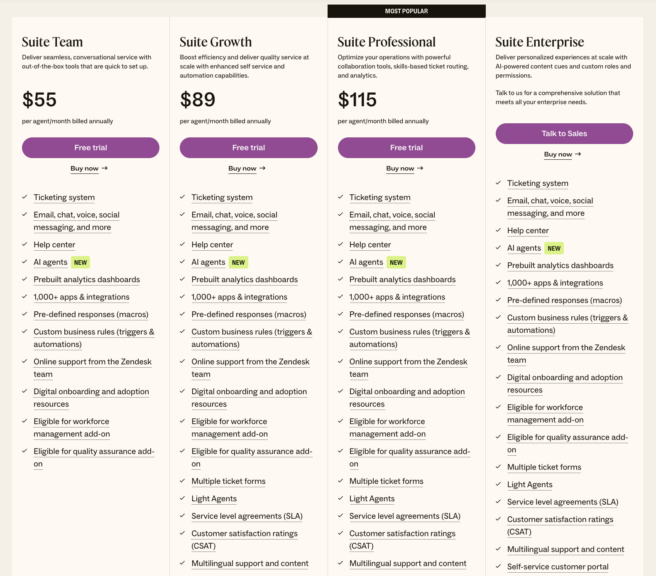
3. When Automation Gets Pricey: The Dilemma in Zendesk
Zendesk provides a variety of automation tools, such as macros, triggers, and automation. However, some customers believe that Zendesk’s automation capabilities do not match their unique demands for a variety of reasons, including a steep learning curve, integration constraints, and the high cost of Zendesk’s sophisticated automation tools.
4. Zendesk: A Platform for CX, But Not for Its Own
Throughout all community forums and review sites, Zendesk users have identified inadequate customer service as one of their most significant complaint points. Strangely, a platform that helps companies improve their customer experience doesn’t do the same for its customers.
Here are several occasions when Zendesk users discuss their problems regarding lack of assistance—as on [Trustradius]
- Training Webinars
- Email and chat help
- Premier Onboarding and Success
5. Zendesk Mobile App: Feature Rich but User-Unfriendly
Zendesk features a decent mobile app that allows users to work on support issues from the convenience of their mobile devices. Sorting, filtering, creating, updating, and receiving alerts are among the available functions. However, there are times when users need assistance navigating and handling basic operations inside the application.
Users need assistance using the Zendesk app for the following reasons:
- A comprehensive overview of all the tickets
- Creation of private notes
- Read and react to the tickets
- Sort, search, and filter tickets
- Observe data
Key reasons why customer seeks alternative tools to Zendesk automation
Customers often look for alternatives to Zendesk automation tools because of the vast requirements of modern customer service experience. Here’s an overview of reasons based on various customer service industries.
- Customizable Tickets: Businesses often require more flexibility in generating customizable tickets to customize their workflows specific to their business processes. Platforms that offer flexible ticket generation could be a first choice for businesses.
- Omnichannel client service: Businesses needing highly integrated omnichannel client services may look for alternative platforms specializing in this service.
- Bilateral, synchronous view: Certain platforms opt for a bilateral, synchronized view of agent-customer interaction, which can improve the agent’s productivity and overall customer satisfaction.
- Conversational AI acquires learning capabilities from your knowledge base: AI-enabled platforms that learn from the knowledge base appeal to the customers/businesses who look for automated responses.
- Generative AI for Live Chat: Businesses now want GPT-enabled chat for customized and contextual responses.
- Ticket routing using smart clusters: Smart cluster ticket routing ensures efficient handling of support tickets, an important feature that can have an edge over Zendesk.
- Automatically produce product insights: Product analytics directly from customer-agent interaction and tickets can provide an edge over normal reporting.
Sobot is also superior in terms of cost, customer service, integrations, and simplicity of use.

Comparing Sobot with Zendesk! Which one is better?
| Zendesk | Sobot | |
| Price | Often considered as expensive as service level tier-up. | More affordable than various renowned market competitors. Customizable pricing is better suited for small to medium enterprises. |
| Support | Slow response time in resolving issues and unsatisfactory customer service. | More responsive and accessible customer support through live chat, phone, and email. |
| Integration | Separate integrations for live chat, email, phone support, and other tools, creating inefficiencies in customer service. | Unified, support channels are integrated into a single platform enabling unified communications. |
| Customization | Delicate framework, not best suited for highly customized complex workflows like e-commerce and non-profit organizations. | Flexible design, best suited for highly customized workflows. Best suited for the industry requiring tailored solutions. |
| Scalability | Suited for medium to large organizations, but costs significantly increase as service plans tier up. | Best suited for small, medium, and large enterprises as per their tailored requirements. Scalable and cost-effective for organizations that are expanding. |
| User Interface | Complaints about user navigation and experience. | More user-friendly and easy to navigate with fewer complaints about usability. |
We have compared Zendesk’s various aspects, to see which had superior customization, integration, price, UI/UX, automation, and support, and then highlighted their features and pricing plans. By selecting an option that solves these issues, Sobot may improve the client experience and simplify their customer service activities.
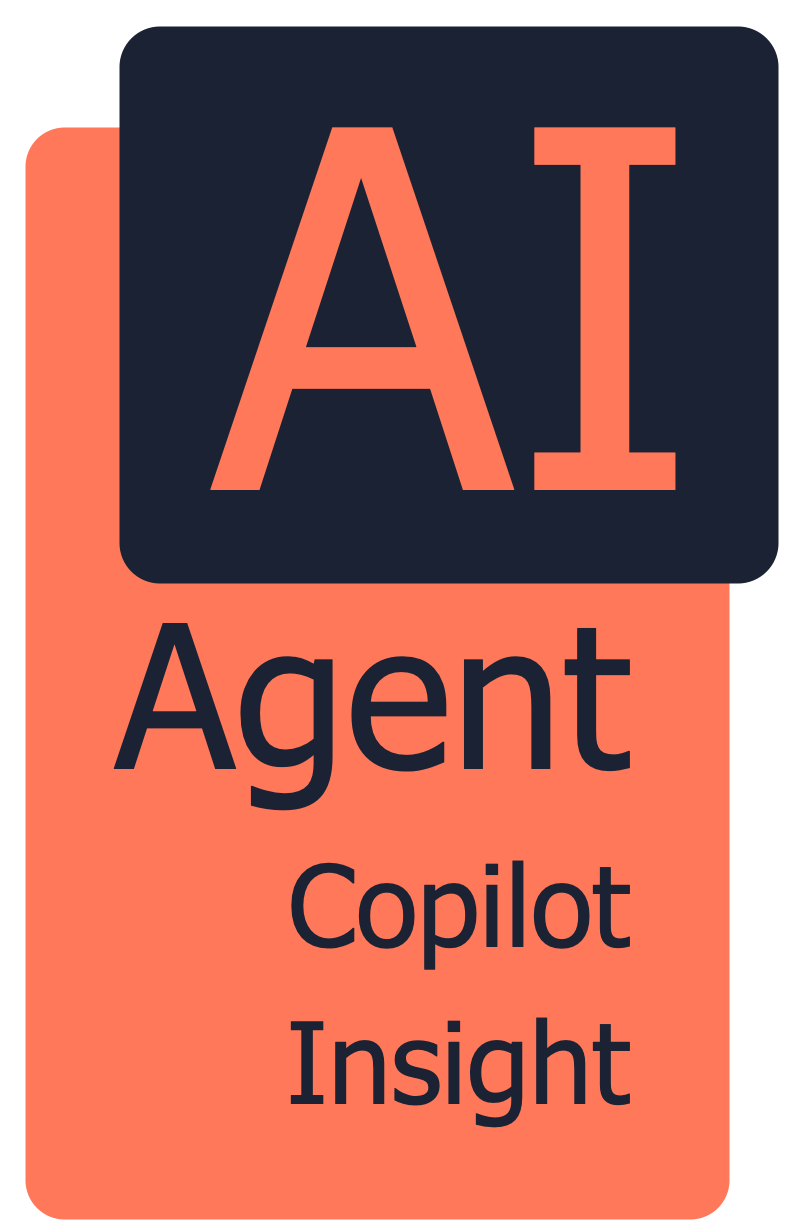
Sobot provides a variety of functionalities designed to fulfill varied company needs:
- AI-powered chatbots: Automate replies to typical requests, lowering response times.
- Real-time analytics: Provide insights into consumer behavior and agent performance.
- Omnichannel integration: Manage all consumer interactions via a single platform.
- Client data integration: This enables you to access full client histories and provide tailored service.
- Robust API capabilities: Customize the platform to meet your specific needs.
These capabilities enable organizations to meet customers’ expectations while simplifying processes.
